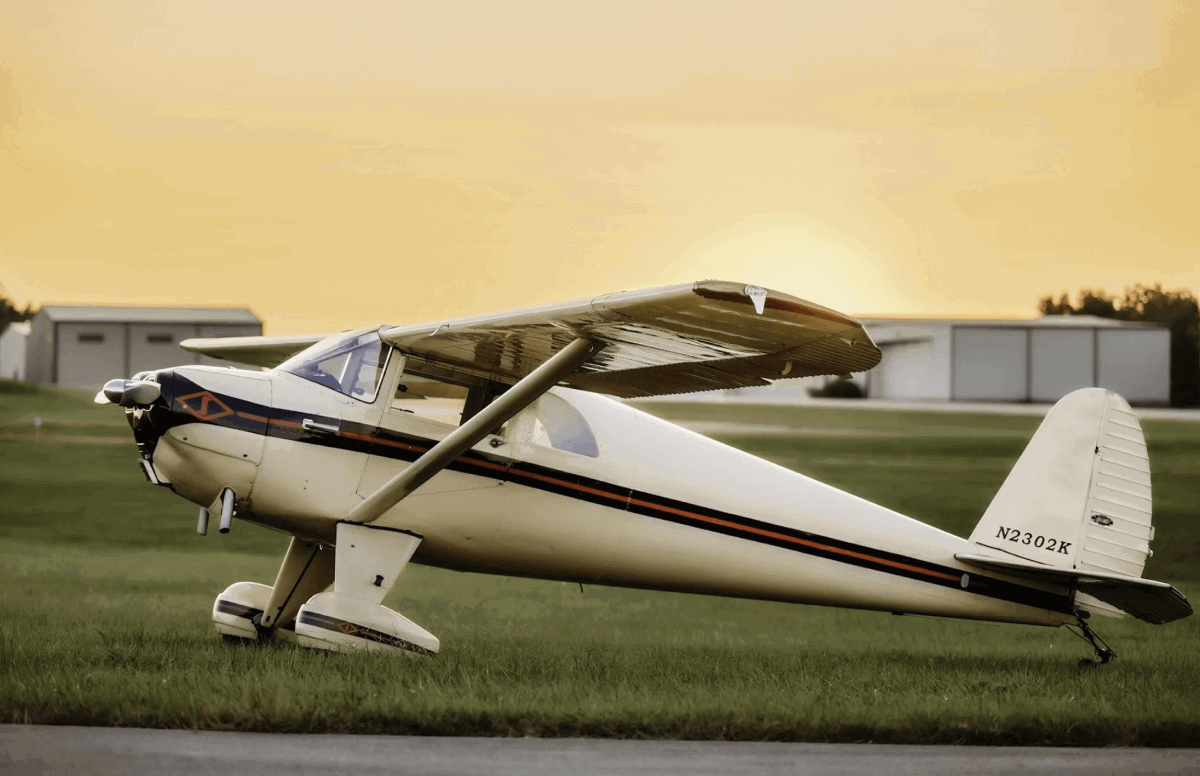Unmodified plane represents one of the more common taildragger options.
When choosing one of the handful of fourplace taildraggers, the process becomes a matter of carefully balancing the pros and cons of each.
The Piper Pacer tends to be more affordable, but the condition of the fabric is key, and the short-coupled airframe demands quick reflexes on takeoff and landing. The Stinson 108 has more relaxed handling, but most come with Franklin engines that have their own ownership demands. The Cessna 180 and 185 are immensely capable, with amazing performance and load-carrying ability, but they’re priced accordingly.
Among all of the four-place taildragger options, the Cessna 170 might offer the single-best balance of flying qualities, ease of ownership, and price. At $89,500 with a low-time engine, today’s bargain checks many boxes.
Manufactured from 1948 through 1956 with over 5,000 examples rolling out of the Wichita, Kansas, factory during that time, the Cessna 170 is one of the more common taildraggers out there. While the 1948 model was essentially a scaled-up 140 with a fabric wing, the subsequent 170A and 170B had an all-metal wing and airframe. The B-model, introduced in 1952, incorporated larger, more effective wing flaps. While most equate this to improved landing distances, the flaps are particularly effective at reducing the takeoff distance by creating more lift.
Every unmodified 170—including this one—has the 6-cylinder, 145 hp Continental C-145, later renamed the O-300. Known for being smooth and nearly bulletproof, its only significant drawback is the lack of power, most noticeable when flying in higher density altitudes and at higher weights.
One very effective way to add more takeoff thrust is with a McCauley 80/42 seaplane propeller, a modification that’s a small fraction of the cost of installing a larger engine.
The 1953 170B introduced a modernized instrument panel layout and significantly improved cabin heat. Rather than directing one stream of hot air on the pilot’s shin, the cabin heat is nicely distributed among all passengers, front and back. The 1953 model also introduced a revised engine cowl with smaller access doors.
This particular example has a relatively low 3,300 hours on the airframe and only 285 hours on the engine since major overhaul. The engine reportedly has good compressions, and the airframe and engine both include all logs since new.
Inside, the panel is well kept and tidy, with a Garmin GPS/com and digital Narco backup radio. The exterior received new paint in 2022.
If you’re looking for a do-it-all taildragger with fantastic handling qualities that can be set up for vintage fly-ins or backcountry exploration, this 170 checks many boxes with few drawbacks.
Learn more about Cessna 170 ownership here.
You can arrange financing of the aircraft through FLYING Finance and quickly calculate your monthly payment using the airplane finance calculator. For more information, email info@flyingfinance.com.


